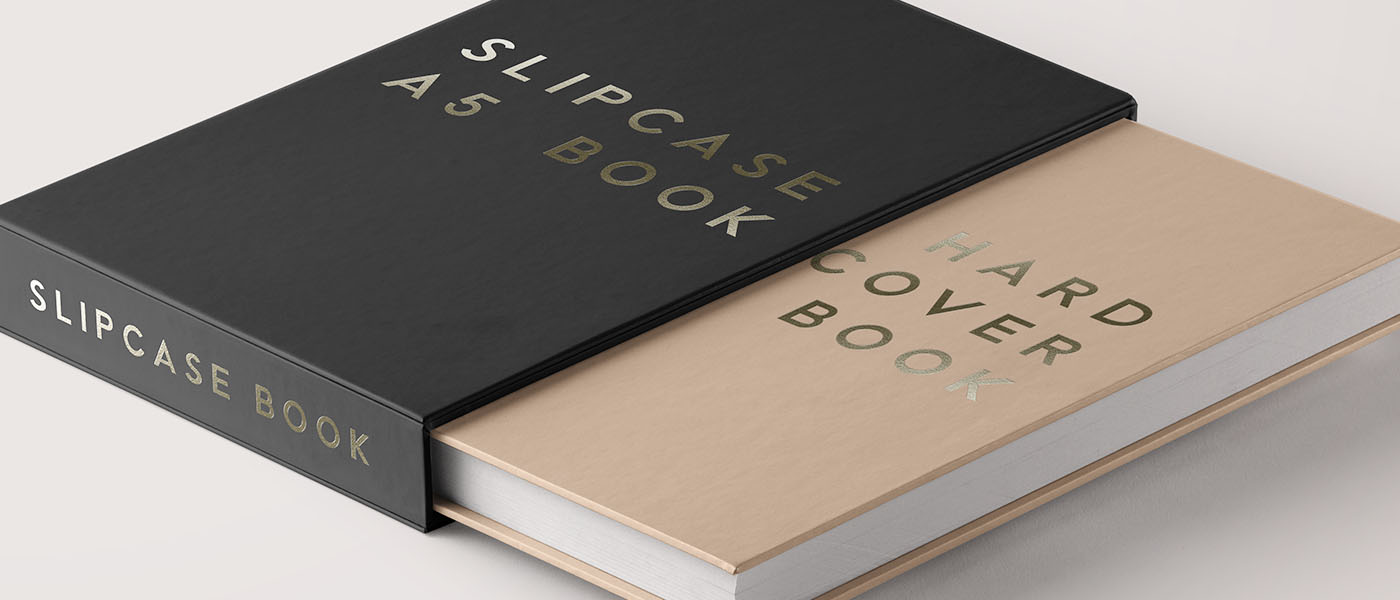Top-Rated Hardcover Books for Every Genre Fan
Top-Rated Hardcover Books for Every Genre Fan
Blog Article
A Comprehensive Guide to the Process of Hardbound Books Printing
When you start the journey of hardcover publication printing, recognizing the entire process is necessary. From preparing your manuscript to picking the appropriate products, each action plays a critical role in the last item. You'll need to consider style elements and printing methods that fit your vision. As you navigate through binding and quality assurance, you'll locate that every choice affects the book's overall allure. So, what comes next off in this complex process?
Recognizing the Hardbound Book Framework
When you discover the world of hardcover publications, you'll rapidly see that their structure is willful and distinct. You'll locate a fabric or natural leather treatment, which not only enhances aesthetics however also adds to the publication's durability.
The text block itself consists of numerous trademarks, or folded sheets, sewn with each other for strength. You'll see that the spinal column is enhanced, permitting a smooth lay-flat analysis experience - hardcover books. Furthermore, the publication's weight typically conveys a sense of quality and durability
Hardcover publications normally feature a dust jacket, which offers as an advertising and marketing tool while shielding the cover. Recognizing these elements aids you value the workmanship behind hardbound publications and their distinct appeal in the literary world.
Manuscript Preparation and Editing And Enhancing
Obtaining your manuscript prepared for printing is necessary, and it starts with correct format standards. You'll need to understand the editing process to refine your work and assure it reverberates with viewers. And also, understanding checking techniques can help you capture those pesky mistakes prior to your publication mosts likely to publish.

Manuscript Formatting Guidelines
Proper manuscript format is vital for creating a professional-looking hardbound book. Beginning by choosing a conventional typeface like Times New Roman or Arial in 12-point dimension. Usage double-spacing throughout the file to enhance readability. Establish your margins to 1 inch on all sides, giving your text area to take a breath. Number your pages in the top right edge, and include your phase titles at the beginning of each new section. Usage clear headings to show sections, and avoid extreme format like bold or italics unless required. See to it to check your manuscript for consistency in design, ensuring that whatever from spelling to spacing complies with your chosen standards. Adhering to these steps will establish a solid structure for your publication.
Modifying Refine Basics
Editing your manuscript is a vital action that can transform it from an outline into a refined end product. Start by reading with your work seriously, concentrating on clarity, framework, and flow. Seek disparities in your narrative, character advancement, or argumentation. It's handy to take breaks in between rounds of editing to acquire fresh perspectives. Don't be reluctant to reduce unneeded web content or rephrase uncomfortable sentences; this will enhance readability. Consider looking for comments from trusted peers or specialist editors who can offer valuable understandings. Bear in mind, modifying isn't nearly fixing errors; it has to do with fine-tuning your voice and ensuring your message resonates with visitors. Welcome the procedure, and you'll see your manuscript luster.
Checking Techniques Introduction
Once you've brightened your manuscript with editing and enhancing, the following step is to assure it's correct that could distract viewers. Start by relaxing after editing; fresh eyes catch blunders better. Review your manuscript out loud-- this helps you hear unpleasant phrasing and place typos. Use electronic tools like spell checkers for first scans, but do not rely exclusively on them. Consider publishing your manuscript; reading theoretically can expose errors that displays miss. Concentrate on one sort of mistake each time, whether it's spelling or grammar, to stay clear of feeling overwhelmed. Ultimately, get a relied on close friend or specialist proofreader to supply a fresh perspective. Their responses can highlight concerns you could overlook.
Designing the Book Cover and Interior
When you're developing your book cover and inside, you'll wish to concentrate on essential style components that capture your audience's focus. Selecting the appropriate typography styles and carefully selecting shades and images can make all the difference in sharing your publication's motif. Let's explore how these selections can elevate your job and bring in viewers.
Crucial Design Components
Developing a captivating book cover and a properly designed interior is crucial for drawing in readers and boosting their experience. Choose shades and images that mirror your book's motif and mood.
A clean, orderly style assists visitors navigate effortlessly. Remember, a natural style throughout your book promotes a specialist look that can considerably impact a reader's choice to select it up.
Selecting Typography Styles
Typography plays a vital duty in both guide cover and interior decoration, shaping exactly how visitors view your web content. When choosing typography styles, consider your book's category and target market. A classic serif font style might function well for literary visit our website fiction, while a modern sans-serif could fit a modern book. Assurance readability; your text needs to be very easy on the eyes, especially for longer passages. Focus on font size and line spacing, as these elements affect overall flow. Mixing typefaces can include interest, but restrict it to 2 or 3 to keep comprehensibility. Think regarding hierarchy-- utilize various styles for headings and body message to direct readers effortlessly with your job. Your typography choices will significantly impact the visitor's experience.
Shade and Imagery Option
Selecting the ideal colors and images is essential for recording readers' focus and communicating your book's motifs. Begin by considering your genre; vibrant shades might benefit a kids's publication, while soft tones suit a secret novel. hardcover books. Usage imagery that reverberates with your material-- photos, images, or abstract layouts can improve your message
When creating the cover, make certain the imagery does not bewilder the title and writer's name; clarity is essential. This natural strategy not only raises your publication's visual but also improves the reader's experience, making it much more remarkable.
Choosing the Right Paper and Materials
When picking paper and materials for your hardcover publication, it's necessary to contemplate exactly how they'll affect the total look of your project. Start by selecting the ideal paper weight; larger supply typically communicates top quality and toughness, while lighter paper can develop an extra delicate touch. Consider the finish as well; glossy paper improves shades and photos, while matte can offer an advanced, downplayed appearance.
Fabric, natural leather, or printed paper can set the tone for your publication. Additionally, believe concerning the binding materials; using high-quality adhesive guarantees your book lasts.
Ultimately, the choices you make here reflect your vision, so take the time to sample various products (hardcover books). Your options will aid produce a book that's not just visually appealing yet useful and additionally resilient
The Printing Process: Methods and Technologies
A selection of printing techniques and modern technologies can bring your hardcover book to life, each offering distinct benefits. Digital printing is a popular choice for short runs, permitting for fast turn-around and affordable options.
For unique effects, you may take into consideration techniques like foil marking or embossing, which can include an elegant touch to your cover. Furthermore, you can decide for various inks, including environment-friendly options that accommodate eco conscious visitors. Understanding these strategies helps you make notified choices, ensuring your hardcover publication not just looks terrific yet also satisfies your manufacturing needs efficiently. Select the appropriate strategy to elevate your book's allure and impact.
Binding Approaches for Hardcover Books
Numerous binding approaches can change click site your hardcover publication into a resilient and attractive product. An additional approach is the perfect binding, which uses adhesive to hold the pages together, enabling for a sleek spine however less longevity contrasted to case binding.
You might likewise take into consideration spiral binding, which enables your book to lay flat, making it ideal for manuals or workbooks. Each binding method has its benefits and fits various demands, so believe concerning your book's purpose and audience when picking the best choice for your project.
Quality Control and Final Touches
After picking the right binding method for your hardbound publication, quality control comes to be important to validate your final item fulfills your assumptions. Start by evaluating the printed pages for any kind of errors or variances in color and design. You do not wish to miss out on any typos or misprints that can influence your visitors' experience.
Following, examine the binding stability. Verify the pages are securely connected and that the spinal column is sturdy. A well-bound book not only looks professional yet also really feels long lasting in your hands.
In addition, focus on the cover. Seek any kind of scuff marks or misalignments in the artwork. Make certain they're used continually throughout all copies. if you have actually chosen for special coatings like embossing or foil marking.
Ultimately, conduct a complete assessment of the entire set before transferring to distribution. In this manner, you can verify that every publication shows your high criteria.
Often Asked Inquiries
Exactly how Lengthy Does the Hardcover Publication Printing Process Commonly Take?
What Is the Minimum Order Quantity for Hardcover Books?
The minimum order quantity for hardcover books typically starts around 100 copies, but it can differ based upon the printer. You should get in touch with your selected printing service for their details needs and prices.

Can I Publish Hardbound Books in Custom Sizes?
Yes, you can print hardbound publications in custom-made dimensions. Numerous printing services provide flexibility with measurements, permitting you to select a style that fits your job. Just verify the specs before putting your order.
Exist Eco-Friendly Options for Hardbound Publication Printing?
Yes, you can discover green alternatives for hardcover publication printing. Numerous companies make use of recycled materials and sustainable inks. Just ask your printer concerning their green techniques to assure your task straightens with your ecological values.
What Are the Costs Associated With Hardbound Publication Printing?
When taking into consideration hardbound book printing costs, you'll require to variable in products, style, and printing methods. Added expenditures like delivery and binding can also impact your total budget plan, so plan appropriately for your project.
When you start the trip of hardcover book printing, recognizing the whole process is vital.A variety of printing strategies and modern technologies can bring your hardcover publication to life, each offering special advantages. How Lengthy Does the Hardcover Book Printing Refine Normally Take?
The hardcover publication printing process generally takes around read what he said 2 to 6 weeks.Yes, you can find environmentally friendly options for hardbound book printing.
Report this page